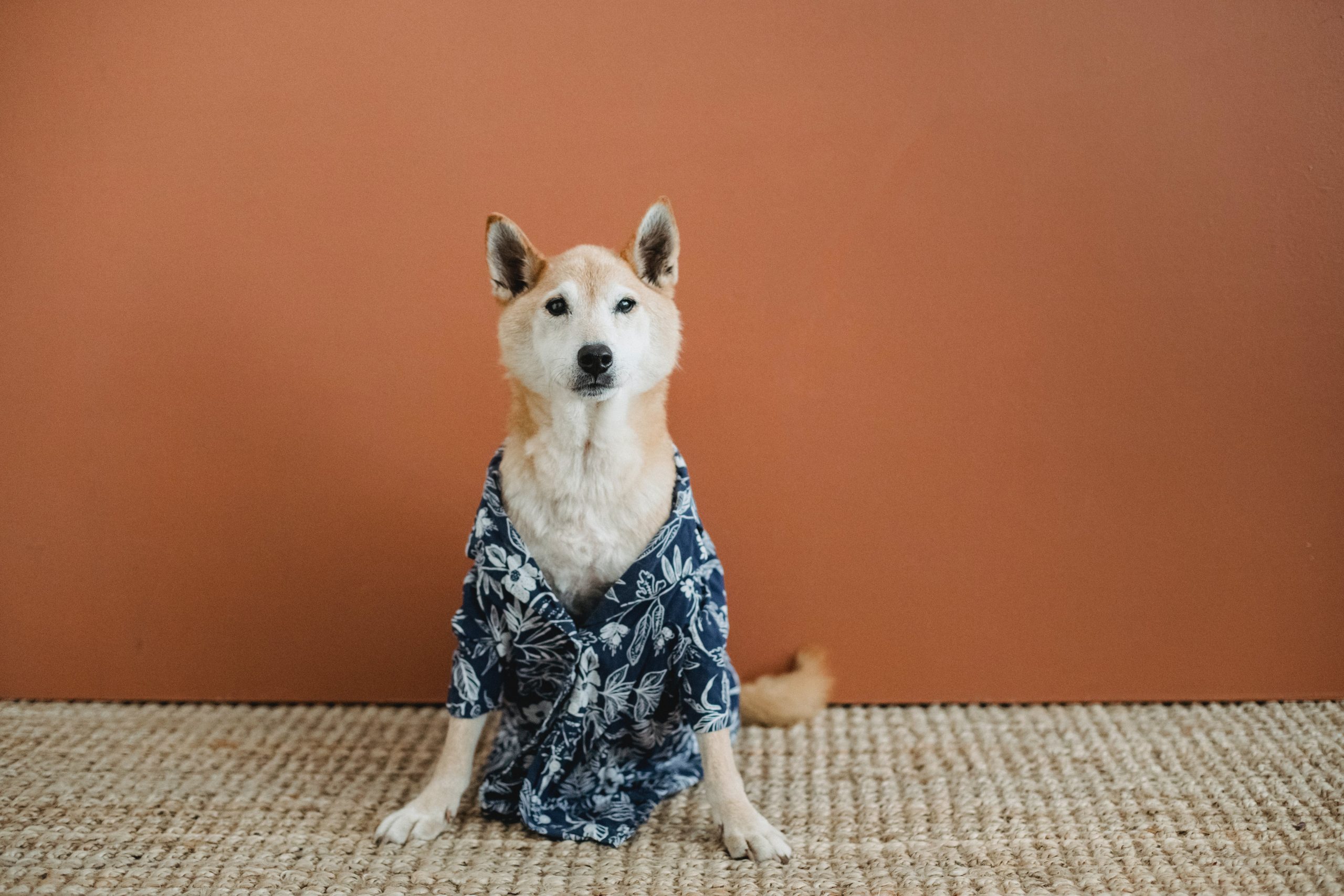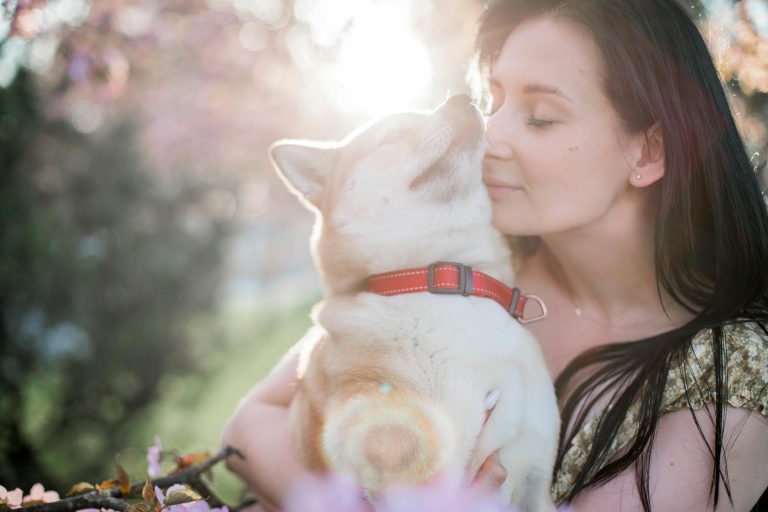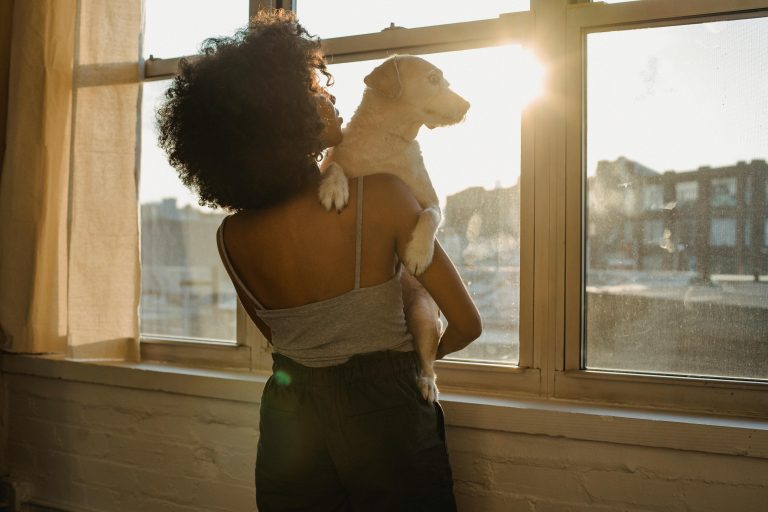Why Does My Dog Stare at Me? Unveiling the Canine Communication Code
Our cherished canine companions, through their devoted companionship, frequently bewilder us with their profound and resolute “Dog Stare.” As a dog owner, it is only natural to contemplate the significance concealed within these penetrating gazes. Within this article, we will immerse ourselves in the captivating realm of canine communication, examining the motivations behind why dogs fixate their gaze on their human counterparts.

The Unspoken Language of Dogs Through the Dog Stare
Visual Cues in Dog Behavior
Dogs communicate primarily through body language, and their eyes play a crucial role in conveying emotions. Understanding these visual cues is key to deciphering the messages our furry friends are trying to express.
The Mystery Behind Intense Gazes
The connection between dogs and humans goes beyond words. Unraveling the mystery of why dogs stare involves delving into their evolutionary history and the unique bond forged through domestication.
Canine Communication
Importance of Eye Contact
Eye contact is a powerful form of non-verbal communication for dogs. It serves as a means of establishing a connection, conveying emotions, and strengthening the bond between dogs and their owners.
Different Types of Stares
Not all dog stare are created equal. Dogs express a range of emotions through their gaze, from affectionate looks that warm the heart to intense stares signaling curiosity or concern.
Understanding Affection
Bonding Through Eye Contact
Mutual gaze between dogs and humans releases oxytocin, the “love hormone,” fostering a sense of connection and strengthening the emotional bond. Discover how eye contact becomes a language of love.
Signs of Love and Connection
Learn to interpret the signs of affectionate gazes, from soft, loving eyes to the infamous “puppy eyes.” Understanding these cues enhances the joy of companionship.
Reciprocal Gazing
Discover the joy of reciprocal gazing. Dogs often mirror their owners’ eye contact, creating a unique channel of communication that transcends words.
Curiosity and Attention
Dogs as Keen Observers
Explore the natural curiosity of dogs and their keen observational skills. Staring, in many cases, is a testament to their alertness and fascination with human behavior.
Factors Influencing Staring Behavior
From treats to toys, various factors influence why dogs fix their gaze on their owners. Unravel the secrets behind their focused attention and learn how to respond.

Dog Reacting to Human Expressions
Dogs are highly attuned to human emotions. Understand how your furry friend reacts to your facial expressions and discover the emotional intelligence behind those watchful eyes.
Instincts and Pack Mentality
Evolutionary Roots of Staring
Delve into the evolutionary history of dogs and how their ancestors used gaze as a means of communication. Uncover the instinctual basis of staring in today’s domesticated dogs.
How Packs Communicate Through Gaze
Explore how pack mentality influences the way dogs communicate through their eyes. Understand the social dynamics that shape their behavior in a human-centric pack.
Domestication’s Impact on Canine Behavior
Examine the impact of domestication on canine behavior, particularly in the context of gazing. How has the transition from wild to domesticated affected the way dogs interact with humans?
Behavioral Concerns about Staring
Anxiety-Related Staring
Not all stares are positive. Address the issue of anxiety-related staring, recognizing signs of distress and implementing strategies to alleviate your dog’s unease.
Addressing Excessive Staring
When does staring become a cause for concern? Explore the line between normal behavior and excessive staring, and learn effective methods to address and modify this behavior.
Seeking Professional Help
In cases of persistent behavioral concerns, seeking professional advice is crucial. Discover the importance of consulting with veterinarians or certified dog behaviorists for personalized solutions.
Training and Bonding
Positive Reinforcement Techniques
Positive reinforcement is a powerful tool in shaping your dog’s behavior. Learn how to use positive reinforcement techniques to encourage desired behaviors and strengthen the bond between you and your furry friend.

Building Trust Through Eye Contact
Establishing trust is fundamental in any relationship. Discover how consistent eye contact contributes to building trust and creating a harmonious connection with your dog.
Strengthening the Human-Dog Bond
A strong bond between a dog and its owner is built on trust, communication, and shared experiences. Explore activities that strengthen the human-dog bond, fostering a relationship based on love and understanding.
Playfulness and Engagement Through DOG STARE
Playful Stares vs. Serious Gazes
Not all stares are serious. Distinguish between playful gazes and those that may signal a need for attention or interaction. Understand the nuances of your dog’s expressions.
Interactive Activities for Bonding
Engage in activities that promote interaction and bonding. From playtime to simple training exercises, discover ways to keep your dog mentally stimulated and emotionally connected.
Recognizing Play Cues
Decode the subtle cues that indicate your dog is in a playful mood. Understanding their body language during playtime enhances the joy of interaction and deepens your connection.
Health Considerations
Visual Impairment and Staring
Visual impairment can influence a dog’s staring behavior. Learn how to differentiate between intentional stares and those prompted by a potential vision problem. Regular eye checkups are crucial for maintaining your dog’s visual health.
Routine Eye Checkups for Dogs
Routine veterinary checkups should include thorough eye examinations. Understand the importance of regular checkups in detecting and addressing potential eye issues before they become serious.
Detecting Underlying Health Issues
Sometimes, staring may be a symptom of an underlying health issue. Be aware of signs that suggest your dog’s gaze is indicative of a medical concern, and take prompt action to ensure their well-being.
Breaking the Stare
Techniques to Redirect Attention
In situations where staring becomes excessive or unwanted, learn effective techniques to redirect your dog’s attention and encourage alternative behaviors.
Teaching “Look Away” Commands
Training your dog to look away on command can be a valuable skill. Explore step-by-step methods to teach your furry friend to break eye contact when necessary.
Ensuring a Healthy Balance
Balance is key in addressing staring behavior. Discover the importance of ensuring a healthy balance between eye contact and other forms of communication, fostering a well-rounded relationship.
Case Studies
Real-Life Examples of Staring Behavior
Explore real-life case studies illustrating various scenarios of staring behavior. Understand the context, interventions implemented, and the outcomes achieved in these situations.
Successful Interventions and Outcomes
Learn from successful interventions that have helped modify staring behavior. Gain insights into the strategies employed and how they positively impacted the relationships between dogs and their owners.
Learning from Canine Experiences
Dogs teach us valuable lessons through their behaviors. Reflect on the experiences shared by dog owners, gaining a deeper understanding of the diverse ways dogs communicate through their gaze.
- What is Australia Famous For?
- Do Dogs Lick Lips When Happy?
- Why Does My Dog Cry When I Hold Him?
- Is Mating Healthy for Dogs?
- Can I Wash My Dog’s Toys? Unveiling the Secrets to a Healthy Pet
Common Misconceptions
Debunking Myths About Dog Stares
Separate fact from fiction by debunking common myths surrounding dog stares. Clarify misconceptions that may lead to misunderstandings about your dog’s intentions.
Differentiating Between Intent and Instinct
Understanding the difference between intentional stares and instinctual behavior is crucial. Learn how to interpret your dog’s gaze accurately and respond appropriately.
Educating Dog Owners
Promote awareness among fellow dog owners. Share knowledge about dog stares to enhance understanding and strengthen the bonds between humans and their canine companions.
Celebrating the Canine-Human Connection
The Joy of Shared Gazes
Celebrate the simple yet profound joy of shared gazes between dogs and their owners. Recognize the beauty in these unspoken moments that deepen the connection and add richness to the human-dog relationship.
Strengthening the Human-Dog Bond
Acknowledge the significance of building and nurturing a strong bond with your dog. Discover how the unique form of communication through stares contributes to a relationship filled with love, loyalty, and companionship.
Unconditional Love in Every Stare
Conclude the exploration of dog stares by emphasizing the pure and unconditional love embedded in each gaze. Embrace the mystery and beauty of this unique form of communication that transcends language.
Conclusion
In conclusion, the question, “Why does my dog stare at me?” unravels a rich tapestry of canine communication, affection, and instincts. By understanding the nuances of your dog’s gaze, you can deepen the bond you share, address potential concerns, and celebrate the unique connection that makes the human-dog relationship truly special.




Leave a comment